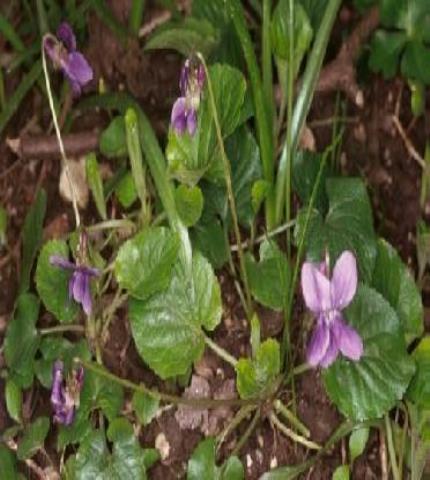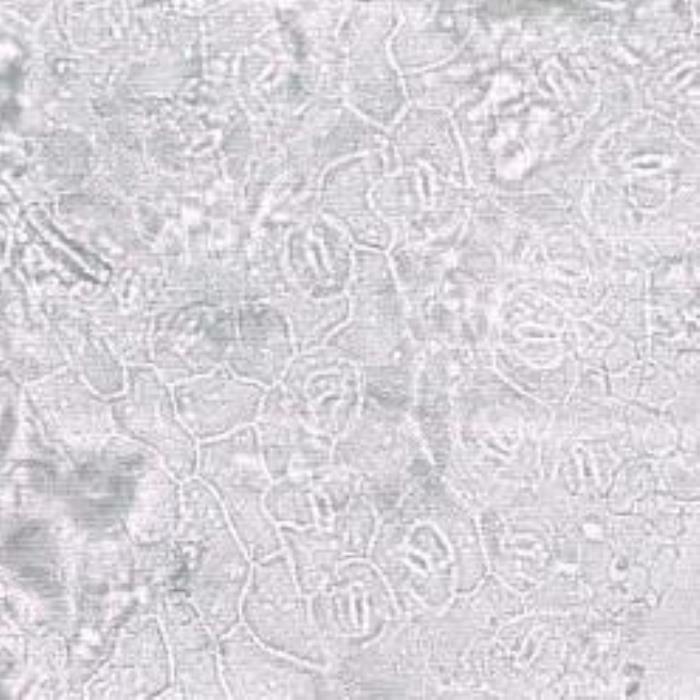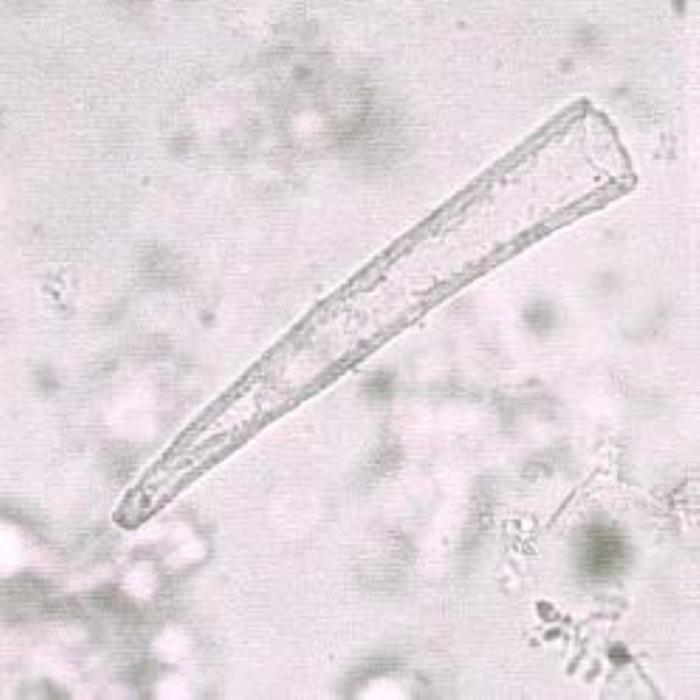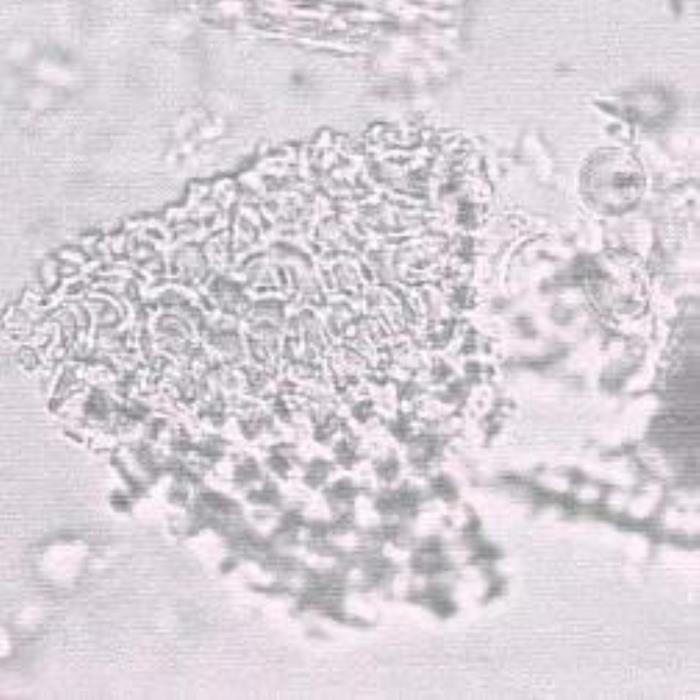
Viola odorata / بنفسج
Banafsaj, Albanafsaj alhelou
Sweet Violet
Banafsaj
Violaceae

Whole Plant

Flower
Ethnobotanical Characteristics
Description
Evergreen perennial ornamental plant, up to 20 cm high , stem central with radiating stolons forming a carpet of growth. Leaves ovate, with rounded apex, widely cordate at the base, pubescent. Flowers solitary, fragrant, on long peduncles, lower petals saccate at the base, purple to violet.
Distribution
Found wild in many regions of the world ,e.g. South and eastern Africa, South America, France, Italy, Australia and New Zealand. Cultivated all over the world as an ornamental plant.
Part(s) Used
Whole plant, leaves, roots and flowers.
Traditional & Medicinal Uses
Leaves emetic, purgative, expectorant, emollient, diaphoretic; used as dressing for burns; in South Africa leaves chewed as anticancer. Roots are emetic and used as expectorant; the alkaloid odoratine from roots is hypotonic. Flowers emetic, diaphoretic, febrifuge used in bilious problems, lung troubles, cough, kidney and liver diseases and also used to flavor breath fresheners. An essential oil from the flowers and leaves is used in perfumery . The leaves are edible and can also be cooked, and are a nice addition to soups or stews where they will help to thicken them in much the same way as okra can be used. The plant has a strong folk reputation in the treatment of cancer and whooping cough. It also contains salicylic acid, which is used to make aspirin, and is therefore effective in the treatment of headaches, migraine and insomnia.
Pharmacognosy and Phytochemistry
Studied Parts
Aerial parts
Microscopic Description
The leaf epidermal cells have sinuous anticlinal cell-walls. Attached covering trichomes are unicellular, thick-walled and heavily warted. The stomata are of the anisocytic type and are mainly found in the lower epidermis. The mesophyll cells contain rosettes of calcium oxalate in a crystal layer while micro rosettes of calcium oxalate are scattered in other cells. Petals have a striated cuticle and regularly arranged polygonal papillose epidermal cells which occasionally extend to form smooth-walled unicellular covering trichomes. Calcium oxalate rosettes are found mainly at the base of the petals and the micro rosettes are found uniformly scattered (DPS, ZCHRTM unpublished results).

a) Lower epidermis

b) Covering trichome

c) Upper epidermis
- (a). Surface view of the lower epidermis of the leaf showing the epidermal cells with their sinuous cells and anisocytic type to stomata. The spongy mesophyll cells are partly shown (right).
- ( b).A detached large unicellular conical, thick-walled, heavily warted covering trichome of the leaf.
- (c). An oblique surface view of the upper epidermis of the petal showing the characteristic papillose cells. Also shown are a pair of spherical pollen grains.(Magnifications: All x 250).
Organoleptic characteristics
Appearance: Powder
Colour: Dark green
Odour: Aromatic
Taste: Slightly acrid
Physicochemical constants
Loss in weight on drying at 105°C (%): 8.60-9.20
Solubilities (%)
Alcohol solubility: 7.20-8.00
Water solubility: 17.60-1800
10% ethanolic extractive: 46.50
Ash values (%)
Total ash: 8.60-8.80
Water soluble ash: 3.40-3.60
Acid-insoluble ash: 0.20
Successive extractive (%)
Petroleum ether (60-80°C): 2.20-2.40
Chloroform: 1.10
Absolute alcohol: 10.90-10.10
Distilled water: 30.10-30.30
pH values
pH of 1% solution: 5.04-5.06
pH of 10% solution: 4.80-4.83
The above results are under process of publication (DPS ZCHRTM unpublished results).
Chemical constituents
Volatile oil, salicylic acid methyl ester, saponins, alkaloids (DPS, ZCHRTM unpublished results).
Pharmacological and Toxicological studies
Viola odorata produced a significant oral antipyretic activity in rabbits using hexane, chloroform and water soluble extracts. (Khattak et. al., 1985). Antipyretic activity was found more prominent in the hexane-soluble portions of the plant (Khattak et al., 1985).No obvious toxic effects were noted for the plant extract up to doses of 1.6 g/kg. (Khattak et. al., 1985). Viola was investigated for cytotoxicity and reported as pharmacological tools and possibly as leads to antitumor agents (Lindhilm et. al., 2002).
The pharmacological and toxicological studies carried out in our laboratory and the results in brief, on Viola odorata (10% ethanolic extract) have been given below. The results presented without references showed unpublished data (unpublished results, ZCHRTM, DBMS):
|
ACTIVITY |
RESULTS |
|
Anti-inflammatory activity-Rat paw oedema |
Extract did not show anti-inflammatory activity. |
|
Antinociceptive activity-Writhing |
Extract did not show analgesic effect. |
|
Antinociceptive activity-Formalin test |
Extract did not show analgesic effect. |
|
Anti-hypertension activity - Anesthetic rats |
Extract did not effect blood pressure and heart rate. |
|
Effect on GIT smooth Muscle-Isolated rabbit jejunum |
Produced mild increase in the amplitude ofcontraction and the resting tension. |
|
Effect on GIT smooth Muscle- Isolated rat fundus |
Produced very significant contraction |
|
Gross behavioral studies- Tremor/Twitches |
No toxic symptoms observed. |
|
Gross behavioral studies-Writhing |
No toxic symptoms observed. |
|
Gross behavioral studies - Diarrhea, Urination |
No diarrhea and urination reported. |
|
Mortality |
No mortality was recorded. |
|
Motor co-ordination (String & Platform test) |
Motor co-ordination not affected. |
|
Anti-asthmatic activity-Tracheal chain |
Produced mild relaxation in the histamine pre-contracted tracheal chain. |
|
Acute toxicity studies |
Extract did not show any toxic symptom. |
|
LD50 evaluation |
>10g/k. |
Summary of the results
The plant showed decreased onset time and number of cough showing anti-tussive activity; however increased contraction on isolated rabbit jejunum. The increase in gastric motility in vivo, an indication of laxative activity. The extract did not show toxicity at the dose tested.
References
- Bown, D. (1995) Encyclopedia of Herbs & Their Uses. Dorling Kindersley Limited, London. ISBN 0-7513-020-31.
- Department of Biomedical Sciences, Zyed Complex for Herbal Research and Traditional Medicine, Unpublished results.
- Department of Pharmacognostic Sciences ( ZCHRTM ), unpublished results.
- Fleming,T(Ed.) PDR for Herbal Medicine. 1st Ed., Medical Economic Company, p. 1217 1998.
- Khattak SG, Gilani SN, Ikram M. (1985) Antipyretic studies on some indigenous Pakistani medicinal plants. J Ethnopharmacol. 14(1): 45-51.
- Kotb, T. F. Medicinal Plants in Libya.(1985) Arab Encyclopedia House. Tripoli-Libya.
- Lindholm P, Goransson U, Johansson S, Claeson P, Gulibo J, Larsson R, Bohlin L, Backlund A. (2002) Cyclotides: a novel type of cytotoxic agents. Mol Cancer Ther. 1(6): 365-9.
- Lyman Benson (1979) Plant Classification.(2nd edition).
- Nadkarni, A. K. Indian Materia Medica.(1992 ) vol1. Popular Prakashan Private Press, India.
- Warrier,P.K,Vaidya, Sala A. Indian Medicinal Plants. (1995) Vol. IV,ISBN 250 0303 7, Orient Longman, Kottakal, India.
- أحمد طبال ( ) معجم النباتات الشافية، دار الشمال، طرابلس - لبنان
- هانئ عرموش، الأعشاب في كتاب: الاستخدامات الطبية و العلاجية و التجميلية و التصنيعية. (1999) دار النفائس، دمشق، سوريا
